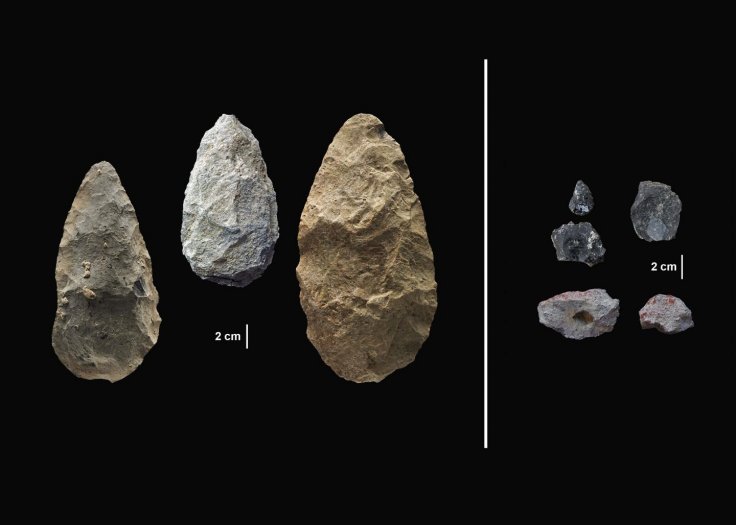
A team of anthropologists has discovered that about 320,000 years ago early humans in East Africa undertook barter trade using colour pigments, distant groups and manufacturing more sophisticated tools. The researchers also discovered that the process was quite different from the techniques used by early Stone Age humans.
This research took place after a joint collaboration between the researchers from Smithsonian's National Museum of Natural History and an international team of anthropologists.The new findings belong to the oldest known fossil record of Homo sapiens that occurred tens of thousands of years earlier than the previous evidence ever found in eastern Africa.
This evidence, related to humans' evolutionary past is linked to the Olorgesailie Basin in southern Kenya which has an archaeological record of early human life. The study on the discovery, published in Science, showed that these changes in behaviour coincided with concurrent environmental change in the region.
While earthquake caused the change of the landscape and fluctuation in climate triggered an unstable weather, technological innovation, social exchange networks and early symbolic communication would have helped humans to survive such volatile and dangerous conditions.
Rick Potts, the director of the National Museum of Natural History's Human Origins Program, who led the research for more than 30 years in collaboration with the National Museums of Kenya, said the change of behaviour "involved greater mental abilities and more complex social lives may have been the leading edge that distinguished our lineage from other early humans."
George Washington University's anthropologist Alison Brooks, who is also an associate of the museum's Human Origins Program, and Berkeley Geochronology Center's Alan Deino, have joined the new research on tweaking the chronology of the Middle Stone Age discoveries.
Early research showed that about 1.2 million years ago, the first evidence of human life in the Olorgesailie Basin was found -- large stone-cutting tools or handoxes which ancient humans used. In 2002, the team, including Potts, Brooks and others, discovered a variety of smaller tools, which they found very carefully crafted, in the basin. The team claimed that these tools were made between 320,000 and 305,000 years ago.
These handaxes may not look similar to the ones which people might have seen in Marvel movie 'Black Panther' but researchers discovered that these tools were more specialized and used for all purposes.
While earlier handaxes were manufactured using local stones, researchers found the small stone points made of an extrusive igneous rock called obsidian at their Middle Stone Age sites. The team also discovered larger, unshaped pieces of the sharp-edged volcanic stone at Olorgesailie.
However, the diverse chemical composition of the artefacts indicated that early humans had exchange networks to move the valuable stone across the ancient landscape.
After discovering the black and red rocks, Potts said, "We don't know what the colouring was used on, but the colouring is often taken by archaeologists as the root of complex symbolic communication."
"Just as colour is used today in clothing or flags to express identity, these pigments may have helped people communicate membership in alliances and maintain ties with distant groups," he continued.








